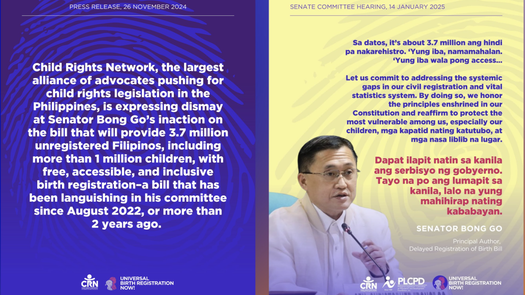July 29, 2025

GHAI is excited to announce the publication of another new chapter to be added to our Civil Registration, Vital Statistics, and ID Management (CRVSID) Legal and Regulatory Review Toolkit (“the Toolkit”), which focuses on the unique challenges faced by women and children in accessing CRVSID services. This new chapter, entitled “Inclusion of Women and Children,” is part of a broader shift underway within the Data for Health (D4H) Initiative to more intentionally focus on gender equity. With the inclusion of the new chapter, the Toolkit now comprises thirteen distinct topics, covering all aspects of CRVSID, from birth, death and stillbirth registration, to determining and certifying cause of death, to equal access to LGBTI Individuals.
GHAI, as a key partner in the Bloomberg Philanthropies D4H Initiative, oversees the CRVSID legal reviews in D4H priority countries, as well as those countries who enroll through the Global Grants Program. A legal review is a carefully guided, step-by-step, customizable process that involves expert evaluation of the legal and regulatory frameworks that underpin a country’s CRVSID systems. A legal review culminates in the drafting of a legal review recommendations report, which provides stakeholders with a detailed, action oriented and substantive blueprint for how to align their CRVSID legal frameworks with international best practices.
The legal review, and the culminating recommendations report, will now include a section specifically focused on the unique hurdles, challenges and bottlenecks faced by women and children when attempting to register their births, deaths, stillbirths, marriages, divorces and other vital events. For women and children, a lack of birth registration and/or identity documents can lead to a life of exploitation, hardship and poverty. A woman cannot access health care, enroll in education, enter the formal employment sector, participate in their country’s elections, open a bank account, travel and cross borders, apply for governmental assistance, receive benefits owed to them (such as inheritances or widow’s rights), purchase property or a whole ream of other essential activities and services if they do not have identity documents, including a birth certificate and/or a national identity card. In countries where child marriages, child labor and the recruitment of children into military service are common, birth registrations are always low (as birth certificates provide the only reliable proof of someone’s age).
While access to CRVS and ID services is critical for all members of a population, women are disproportionately impacted when unable to register their (and their children’s) vital events. In some countries, cultural, social and religious traditions complicate women’s ability to access civil registration services on their own, and in some countries the law explicitly does this. For example, in some countries, only males or fathers are legally authorized to register births and deaths; single mothers are unable to register their birth of their child without disclosing the father’s name; and underage mothers (women who become mothers under the age of 18) are automatically reported to the police or prosecutor’s office when attempting to register their child’s birth. These laws and discriminatory practices only disincentivize women from registering their vital events.
Women and children without birth registrations and identity documents are among the most vulnerable individuals in the world. Civil registration systems must be designed and ungirded by legal frameworks that ensure that everyone has equal access to their services. The new Toolkit chapter on Women and Children, which can be accessed here, is designed to assist countries with ensuring just that.
The Inclusion of Women and Children was authored by GHAI consultant Lynn Sferrazza in partnership and consultation with all D4H partners.



